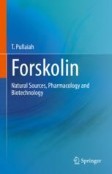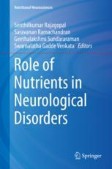Search
Search Results
-
Neuroprotective Effects of Carbonic Anhydrase Inhibition and Cyclic Adenosine Monophosphate Activation in Mouse Model of Transient Global Cerebral Ischemia and Reperfusion
Cerebral ischemia is the primary basis of stroke, both sharing common pathogenic origins leading to irreversible brain damage if blood supply is not...

-
An organoid model to assay the role of CFTR in the human epididymis epithelium
Organoid cultures derived from primary human tissues facilitate the study of disease processes and the development of new therapeutics. Most men with...

-
Pharmacology of Coleus forskohlii and Forskolin
Diterpene forskolin is the active constituent derived from the roots of Coleus forskohlii. It is endowed for its versatile pharmacological...
-
Organoids as a Model for Intestinal Ion Transport Physiology
The advent of intestinal organoid culture in 2009 was a fortuitous development in the search for a valid marker of intestinal stem cells, and...
-
NFATc4 Knockout Promotes Neuroprotection and Retinal Ganglion Cell Regeneration After Optic Nerve Injury
Retinal ganglion cells (RGCs), neurons transmitting visual information via the optic nerve, fail to regenerate their axons after injury. The...

-
Species of the Berberis Genus Found in the Western Himalayas
In the past few years, the concern to develop organic food and medicines has drawn attention to focus more on the synthesis of herbal drugs. The...
-
β-adrenergic signaling triggers enteric glial reactivity and acute enteric gliosis during surgery
BackgroundEnteric glia contribute to the pathophysiology of various intestinal immune-driven diseases, such as postoperative ileus (POI), a motility...

-
Role of Antioxidant Nutraceuticals in Neurodegenerative Diseases
Neurodegenerative diseases are characterized by progressive dysfunction and death of neuron. Neurodegenerative diseases like Alzheimer’s disease,...
-
Differentiation of Stem Cells into Hepatocyte Lineage: In Vitro Cell Culture, In Vivo Transplantation in Animal Models
Liver failure is one of the life-threatening illnesses, and it accounts for 3.5% of all deaths worldwide. Liver transplantationTransplantation is the...
-
Inhibition of NLRP1-Dependent Pyroptosis Prevents Glycogen Synthase Kinase-3β Overactivation–Induced Hyperphosphorylated Tau in Rats
Our previous study indicated that inhibition of NLRP1-dependent pyroptosis could decrease intracerebroventricular (ICV) injection of a protein kinase...

-
The use of fibroblasts as a valuable strategy for studying mitochondrial impairment in neurological disorders
Neurological disorders (NDs) are characterized by progressive neuronal dysfunction leading to synaptic failure, cognitive impairment, and motor...

-
Single-cell-resolved differentiation of human induced pluripotent stem cells into pancreatic duct-like organoids on a microwell chip
Creating in vitro models of diseases of the pancreatic ductal compartment requires a comprehensive understanding of the developmental trajectories of...

-
Human umbilical cord mesenchymal stem cells attenuate diabetic nephropathy through the IGF1R-CHK2-p53 signalling axis in male rats with type 2 diabetes mellitus
Diabetes mellitus (DM) is a disease syndrome characterized by chronic hyperglycaemia. A long-term high-glucose environment leads to reactive oxygen...
-
Unveiling Emerging Avenues in Antiviral Research: Navigating Clinical Trials and Regulatory Landscapes
Combating viral diseases represents a major challenge, especially due to the complexity, whether due to the ability of these pathogens to mutate or...
-
Oligodendroglial-Astroglial Cell-Cell Communication in the Central Nervous System
The central nervous system (CNS)Central nervous system (CNS) is mainly comprised of neurons and glial cellsGlial cells, namely, astrocytesAstrocytes,...
-
Astrocytes respond to a neurotoxic Aβ fragment with state-dependent Ca2+ alteration and multiphasic transmitter release
Excessive amounts of amyloid β (Aβ) peptide have been suggested to dysregulate synaptic transmission in Alzheimer’s disease (AD). As a major type of...

-
Inhibition of Schwann cell pannexin 1 attenuates neuropathic pain through the suppression of inflammatory responses
BackgroundNeuropathic pain is still a challenge for clinical treatment as a result of the comprehensive pathogenesis. Although emerging evidence...

-
Entamoeba histolytica and Entamoeba dispar
Of the various species of amebas that are common inhabitants of the human intestinal tract the only parasitic ameba of medical importance is...
-
Biobanking of human gut organoids for translational research
The development of human organoid culture models has led to unprecedented opportunities to generate self-organizing, three-dimensional miniature...

-
Bridging the Metabolic Parallels Between Neurological Diseases and Cancer
Despite the many recent breakthroughs in cancer research, oncology has traditionally been seen as a distinct field from other diseases. Recently,...
